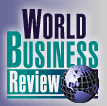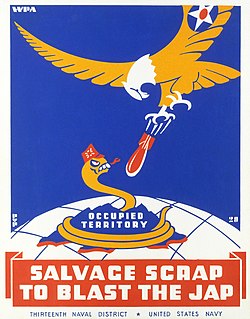History
It was explained to a large audience by Rob Corddry on The Daily Show with Jon Stewart on March 17, 2004. The Daily Show use of the word infoganda was in reference to a U.S. government video released in early March 2004 to many local television stations. The video featured a short report in local television news format that provided information about recent revisions to prescription drug coverage provided by Medicare.
The Daily Show is an American late-night talk and news satire television program. It airs each Monday through Thursday on Comedy Central. Describing itself as a fake news program, The Daily Show draws its comedy and satire from recent news stories, political figures, media organizations, and often uses self-referential humor as well.

A prescription drug is a pharmaceutical drug that legally requires a medical prescription to be dispensed. In contrast, over-the-counter drugs can be obtained without a prescription. The reason for this difference in substance control is the potential scope of misuse, from drug abuse to practicing medicine without a license and without sufficient education. Different jurisdictions have different definitions of what constitutes a prescription drug.

Medicare is a national health insurance program in the United States, begun in 1966 under the Social Security Administration (SSA) and now administered by the Centers for Medicare and Medicaid Services (CMS). It provides health insurance for Americans aged 65 and older, younger people with some disability status as determined by the Social Security Administration, as well as people with end stage renal disease and amyotrophic lateral sclerosis. Medicare is funded by a combination of a payroll tax, beneficiary premiums and surtaxes from beneficiaries, and general U.S. Treasury revenue.
Infoganda is a relatively new phenomenon. However, many historical instances of propaganda were very close to being infoganda. Filmed news reports of World War II, the Korean War, and other wars can be seen as having carried propaganda in a news format.

World War II, also known as the Second World War, was a global war that lasted from 1939 to 1945. The vast majority of the world's countries—including all the great powers—eventually formed two opposing military alliances: the Allies and the Axis. A state of total war emerged, directly involving more than 100 million people from over 30 countries. The major participants threw their entire economic, industrial, and scientific capabilities behind the war effort, blurring the distinction between civilian and military resources. World War II was the deadliest conflict in human history, marked by 50 to 85 million fatalities, most of whom were civilians in the Soviet Union and China. It included massacres, the genocide of the Holocaust, strategic bombing, premeditated death from starvation and disease, and the only use of nuclear weapons in war.

The Korean War was a war between North Korea and South Korea. The war began on 25 June 1950 when North Korea invaded South Korea following a series of clashes along the border.
However, despite superficial similarities with propaganda, the term infoganda refers to a very peculiar kind of propaganda. The infomercial format that has developed in the U.S. since 1990 has a specific format, which includes fabricated names for the reporters, scripted interviews with other supposedly neutral people, a maximum use of authority-projecting (costumed) professionals (doctors, lawyers, etc.), the use of statistics in the same way that news organizations use it, and other similarities to local news. Infoganda is the use of this format to sell propaganda to the viewers.

Advertising is a marketing communication that employs an openly sponsored, non-personal message to promote or sell a product, service or idea. Sponsors of advertising are typically businesses wishing to promote their products or services. Advertising is differentiated from public relations in that an advertiser pays for and has control over the message. It differs from personal selling in that the message is non-personal, i.e., not directed to a particular individual.
Advertising is communicated through various mass media, including traditional media such as newspapers, magazines, television, radio, outdoor advertising or direct mail; and new media such as search results, blogs, social media, websites or text messages. The actual presentation of the message in a medium is referred to as an advertisement, or "ad" or advert for short.
Mass media refers to a diverse array of media technologies that reach a large audience via mass communication. The technologies through which this communication takes place include a variety of outlets.

Broadcasting is the distribution of audio or video content to a dispersed audience via any electronic mass communications medium, but typically one using the electromagnetic spectrum, in a one-to-many model. Broadcasting began with AM radio, which came into popular use around 1920 with the spread of vacuum tube radio transmitters and receivers. Before this, all forms of electronic communication were one-to-one, with the message intended for a single recipient. The term broadcasting evolved from its use as the agricultural method of sowing seeds in a field by casting them broadly about. It was later adopted for describing the widespread distribution of information by printed materials or by telegraph. Examples applying it to "one-to-many" radio transmissions of an individual station to multiple listeners appeared as early as 1898.
WPXN-TV virtual and UHF digital channel 31, is the Ion Television station licensed to New York City. The station is owned and operated by Ion Media and its transmitter is located at One World Trade Center.
Media manipulation is a series of related techniques in which partisans create an image or argument that favours their particular interests. Such tactics may include the use of logical fallacies, psychological manipulations, outright deception, rhetorical and propaganda techniques, and often involve the suppression of information or points of view by crowding them out, by inducing other people or groups of people to stop listening to certain arguments, or by simply diverting attention elsewhere. In Propaganda: The Formation of Men's Attitudes, Jacques Ellul writes that public opinion can only express itself through channels which are provided by the mass media of communication – without which there could be no propaganda.
It is used within public relations, propaganda, marketing, etc. While the objective for each context is quite different, the broad techniques are often similar.
A public service announcement (PSA) is a message in the public interest disseminated without charge, with the objective of raising awareness of, and changing public attitudes and behavior towards, a social issue. In the UK, they are generally called 'public information films' (PIFs); in Hong Kong, they are known as 'announcements in the public interest' ('APIs').
A video news release (VNR) is a video segment made to look like a news report, but is instead created by a PR firm, advertising agency, marketing firm, corporation, or government agency. They are provided to television newsrooms to shape public opinion, promote commercial products and services, publicize individuals, or support other interests. News producers may air VNRs, in whole or in part, at their discretion or incorporate them into news reports if they contain information appropriate to a story or of interest to viewers.
Direct response television (DRTV) is any television advertising that asks consumers to respond directly to the company — usually either by calling a toll-free telephone number, sending an SMS message, or by visiting a web site. This is a form of direct response marketing.
News propaganda is a type of propaganda covertly packaged as credible news, but without sufficient transparency concerning the news item's source and the motivation behind its release. Transparency of the source is one parameter critical to distinguish between news propaganda and traditional news press releases and video news releases.
Fake news is a type of hoax or deliberate spread of misinformation published in traditional news media or via social media to mislead in order to gain financially or politically.
In media studies, media psychology, communication theory and sociology, media influence and media effects are topics relating to mass media and media culture effects on individual or audience thought, attitudes and behavior. Whether it is written, televised, or spoken, mass media reaches a large audience. Mass media is known as being one of the most significant forces in modern culture.

World Business Review is an American television infomercial series that has been criticized for pretending to be a bona fide independent news program. The show typically features executives of mostly up and coming companies talking about their products and services. Haig’s chats with executives seen as ‘30-minute commercial’, Current, Feb. 25, 2002. The infomercial series purchases airtime in North America. The infomercial is formatted as a panel discussion in combination with segments about specific companies and their solutions. Supporting material and commentary is "provided" by leading industry experts. The series has aired more than one thousand episodes and more than 4,000 interviews.
Below is a glossary of terms used in broadcasting.

Propaganda in the United States is spread by both government and media entities. Propaganda is information, ideas, or rumors deliberately spread widely to influence opinions, usually to preserve the self-interest of a nation. It is used in advertising, radio, newspaper, posters, books, television and other media and may provide either factual or non-factual information to its audiences.
In broadcasting, local insertion is the act or capability of a broadcast television station, radio station or cable system to insert or replace part of a network feed with content unique to the local station or system. Most often this is a station identification, but is also commonly used for television or radio advertisements, or a weather or traffic report. A digital on-screen graphic, commonly a translucent watermark, may also be keyed (superimposed) with a television station ID over the network feed using a character generator using genlock. In cases where individual broadcast stations carry programs separate from those shown on the main network, this is known as regional variation or an opt-out.
Brokered programming is a form of broadcast content in which the show's producer pays a radio or television station for air time, rather than exchanging programming for pay or the opportunity to play spot commercials. A brokered program is typically not capable of garnering enough support from advertisements to pay for itself, and may be controversial, esoteric or an advertisement in itself.
Educational advertisements are ad campaigns in which the creators attempt to inform, update, or persuade the public to engage in or avoid current issues. This type of advertisement is often negatively associated with propaganda. While similar to public service announcements, educational advertisements often cross into commercial fields whereas public service announcements are oriented on strict non-profit basis. Educational advertisements focus on a number of modern social, political, religious, and consumer-based issues. They traditionally appear on television and radio, but more and more campaigns are turning to the internet, especially email, as a cheap and efficient way to spread their messages. While most educational advertisements are deployed in the United States of America, there have been campaigns across Europe, Canada, and New Zealand. However, due to the dependence on technology to broadcast their messages, campaigns usually appear in developed countries where the largest possible population is likely to encounter their message.

Propaganda is a form of persuasion that is often used in media to further some sort of agenda, such as a personal, political, or business agenda, by evoking an emotional or obligable response from the audience. It includes the deliberate sharing of realities, views, and philosophies intended to alter behavior and stimulate people to act.









